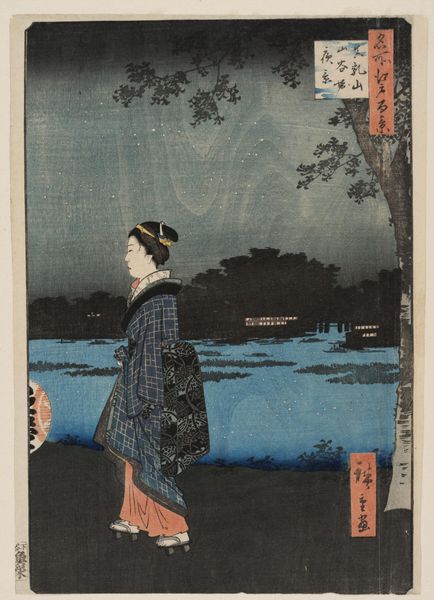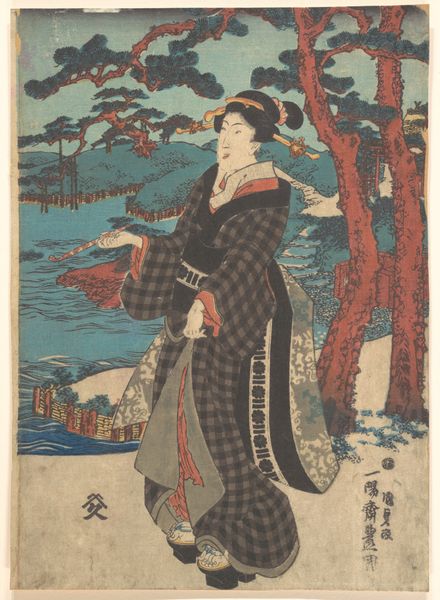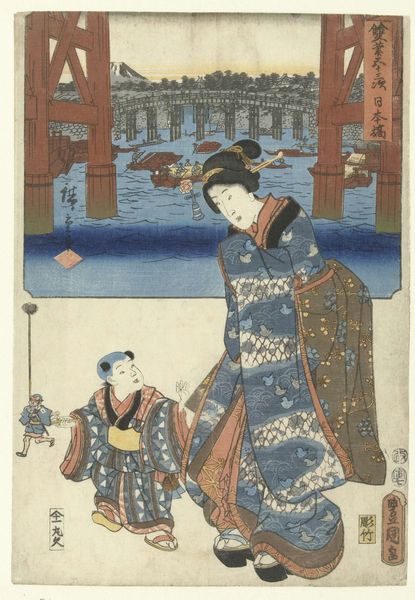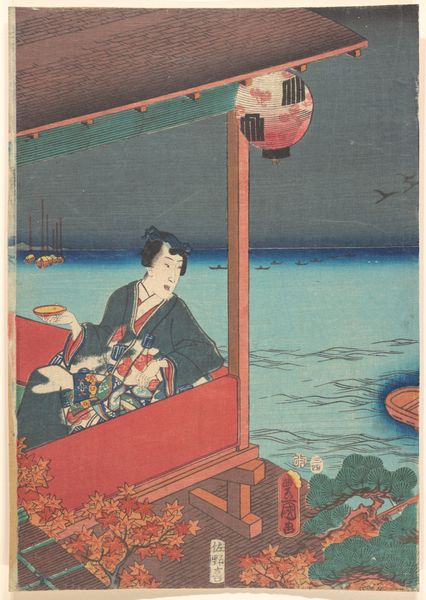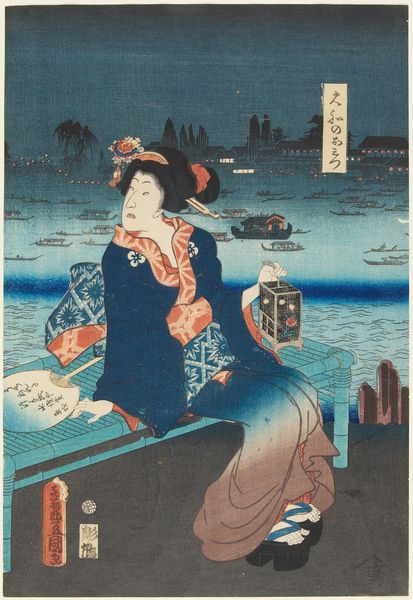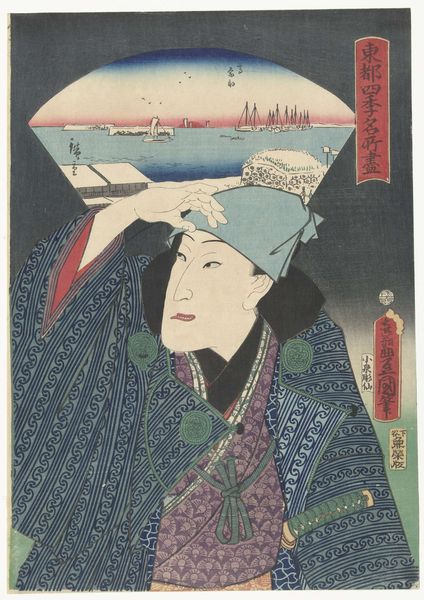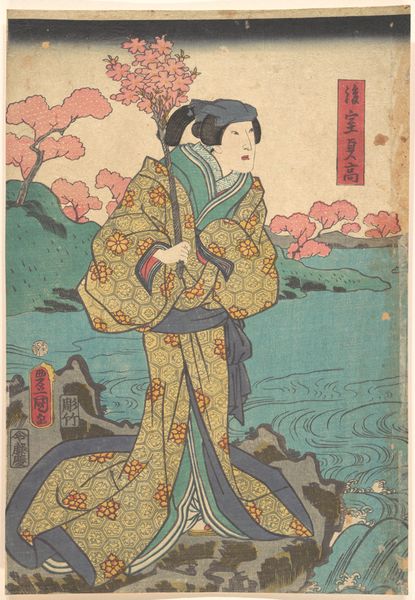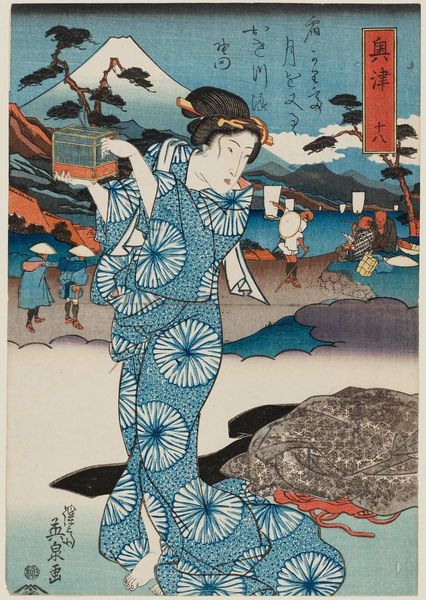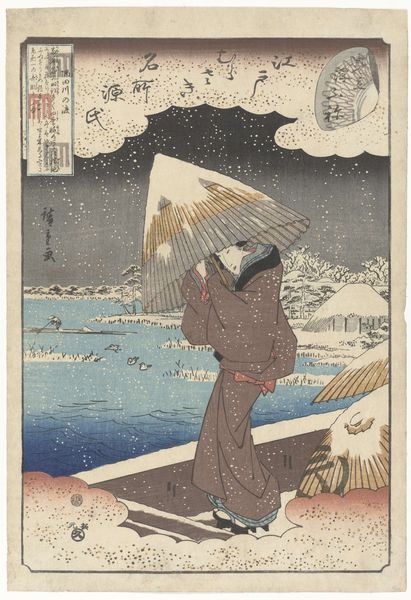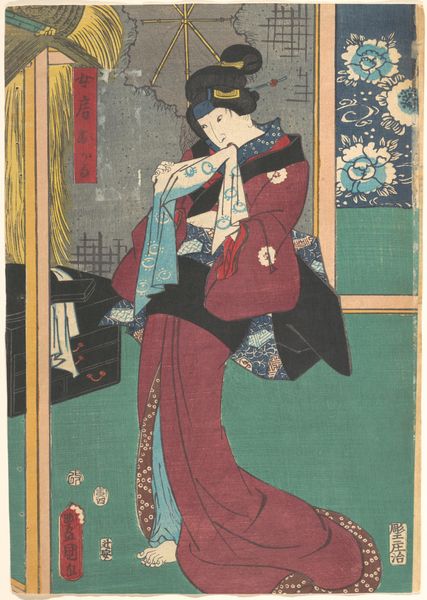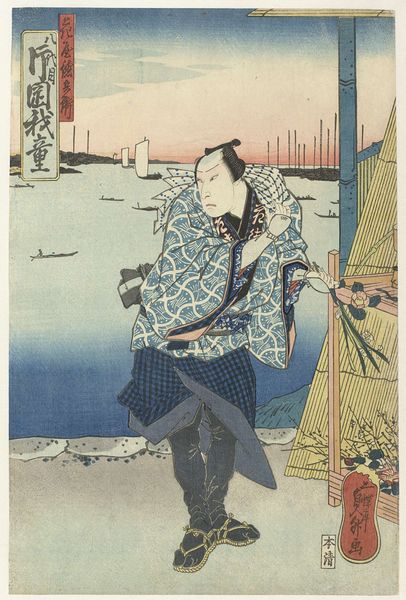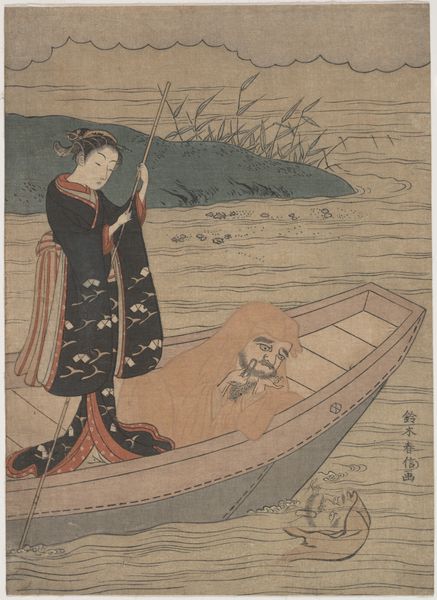
painting, print, watercolor
#
portrait
#
painting
# print
#
asian-art
#
landscape
#
ukiyo-e
#
watercolor
#
cityscape
#
mixed media
Copyright: Public domain
Curator: Welcome, everyone. Today, we’re looking at “Night View of Matsuchiyama and the San'ya Canal,” a woodblock print crafted around 1857 by Utagawa Hiroshige. Editor: It's really striking. There’s such a calm mood—no, perhaps reflective, or melancholic—to this quiet nocturne. I'm drawn to the solitary figure under that vast, speckled sky. Curator: Hiroshige was a master of capturing the ephemeral beauty of everyday life in Edo, modern Tokyo. Night scenes such as this became quite popular as the city's infrastructure grew, lighting up at night. He played a pivotal role in establishing landscape prints as a major genre in ukiyo-e. Editor: Landscape, yes, but the placement of the woman on the path… She seems very intentionally placed as a figure within a quickly changing cityscape, doesn't she? Considering Edo was experiencing massive economic and cultural shifts during that time, and class structures were extremely rigid, could we interpret this as a commentary on the place of women in such society? The constraints of society mirrored, perhaps, in the small path? Curator: Interesting. Social commentary isn't usually at the forefront when people analyze Hiroshige. But when looking at this particular piece, you’re right, there's that inherent tension that stems from the political dynamics that had been taking hold within the urban environments across Japan. The gaze of the woman in a way symbolizes the viewers, inviting one into a space for reflection regarding the structures. Editor: Exactly. There’s also the way Hiroshige juxtaposes natural and artificial light, all those distant dots of illumination along the river’s edge mirroring the stars. It makes you consider our place within an increasingly built environment. Curator: And the medium itself speaks to those changes, in that woodblock printing facilitated mass production, bringing art to a wider audience and reshaping societal understanding. The market shaped art itself, as much as art shaped culture. Editor: A crucial relationship to explore, indeed. When considering those intersectional forces, this scene, far from simply pretty, sparks larger inquiries around personhood, class, and, even, the industrial transformations altering the world as that figure experiences it. Thank you for enriching my viewing. Curator: My pleasure. The confluence of aesthetics and broader societal transformations can create so many interpretive layers. We'll now transition into discussing our next piece that explores yet more intersectional landscapes.
Comments
No comments
Be the first to comment and join the conversation on the ultimate creative platform.
